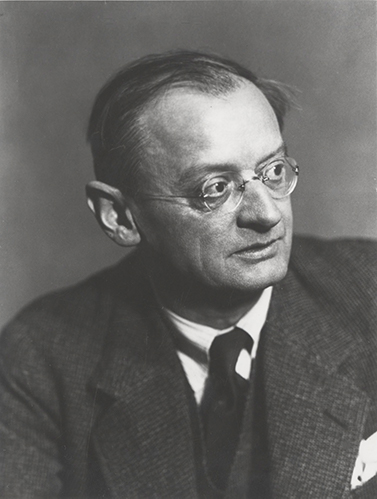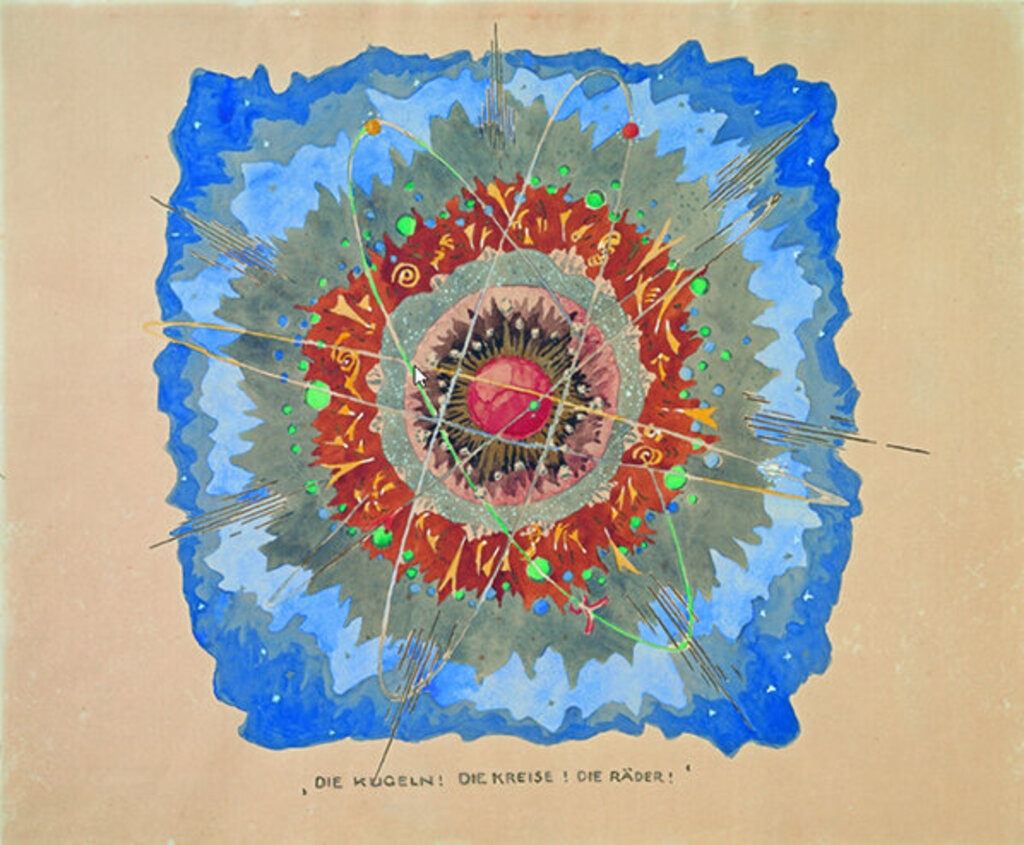
Bruno Taut. Alpine Architektur
Under the impression of the First World War, Bruno Taut (1880-1938) designed the utopia of reconstructing the world with his Alpine Architektur project in 1917/18. The series of large format pencil and pen drawings, some of which are painted in watercolours, are considered to be Bruno Taut’s magnum opus as one of the most important Modernist architects of the 20th century. The collection of the Bruno Taut archive includes all original drawings and first editions of the publication Alpine Architektur in 5 Teilen und 30 Zeichnungen by Folkwang-Verlag, 1919.

Architect and urban planner
04/05/1880 Königsberg – 24/12/1938 Istanbul
1931–1934 Member of the Prussian Academy of Arts, Berlin
1897–1902 Abitur (school leaving examination), apprenticeship as a bricklayer, attended Baugewerkschule Königsberg building trades school; 1903 moved to Berlin and worked for Bruno Möhring; 1904–1908 worked in the office of Theodor Fischer, Stuttgart; 1908 returned to Berlin; 1909 partnership with Franz Hoffmann and establishment of Bürogemeinschaft Taut und Hoffmann; 1912 his brother Max Taut joined the office partnership; 1913 consultant architect to the Deutsche Gartenstadtgesellschaft (German Garden City Society); plans for the garden city of Falkenberg, Berlin and Reform, Magdeburg; 1917 alternative civilian service at Stellawerk stove factory in Bergisch Gladbach; completed the publication Die Stadtkrone and began to work on Alpine Architektur; 1918 returned to Berlin after the war had ended; co-founder of the Arbeitsrat für Kunst (Workers' Council for Art), member of the Novembergruppe; member of the board of the Deutscher Werkbund (German Work Federation); 1920 initiator of the correspondence Die Gläserne Kette; 1921–1924 city architect in Magdeburg; publisher of the magazine Frühlicht (1921/22); returned to Berlin, worked as a consultant architect for GEHAG (1924–1932); design and realisation of housing estates and residential developments in Berlin; from 1926, frequent working visits to Moscow; 1930 honorary professor with a lectureship at the Department of Residential Building and Housing, Technical University Berlin-Charlottenburg; 1933 fled from the National Socialists to Japan; 1933–1934 consultant at the State Teaching and Industrial Art Institute kogei shidosho in Sendai, Japan; 1936 appointed director of the Architecture Department of the Academy of Arts in Istanbul; director of the architecture office of the Turkish Ministry of Culture.
Archive and collection
The Bruno Taut Archive and the collection of the Bruno Taut Archive of the Akademie der Künste, Berlin have been compiled from various branches of Taut's family and the provenance of his partner Erica Wittich as well as from the archive of GEHAG, Berlin. The contributions include personal documents, manuscripts of theoretical texts, diaries, architectural plans, about 200 freehand drawings including a large selection of landscape drawings, sketch books; extensive correspondence, including with Adolf Behne; photographs from his stays in Japan and Turkey, landscape watercolours, architectural drawings, further correspondence and diaries.
